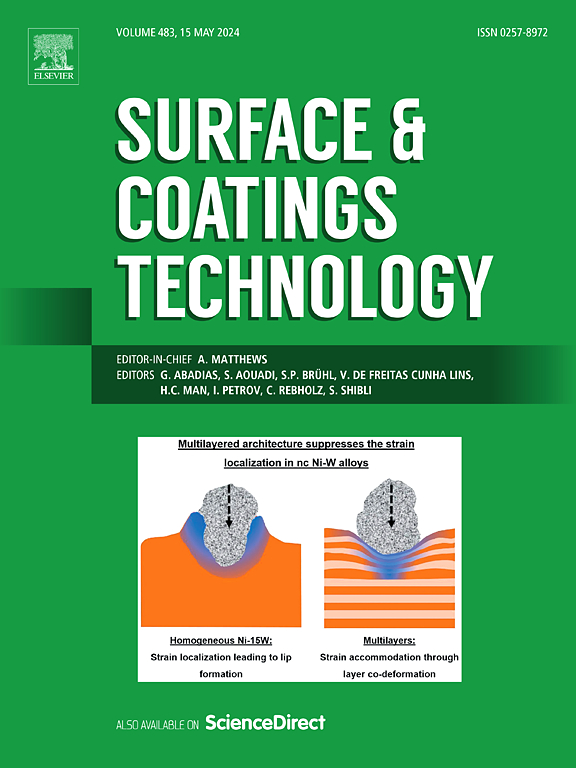Development of barrier coatings based on diamond-like carbon for hydrogen storage and transportation
IF 5.3
2区 材料科学
Q1 MATERIALS SCIENCE, COATINGS & FILMS
引用次数: 0
Abstract
The currently employed materials in hydrogen storage and transportation are steels with limited mechanical and hydrogen embrittlement resistance. Therefore, effective and durable barrier coatings capable of withstanding high-pressure hydrogen charging are required to mitigate hydrogen permeation, protect the pipe or tank material and thus enhance its overall performance. In this regard, hydrogenated amorphous Diamond-Like Carbon (a-C:H) coatings with adhesion-promoting Cr and WC interlayers were designed in this work by means of Physical Vapor Deposition (PVD) and Plasma-Enhanced Chemical Vapor Deposition (PECVD) technologies. Films with different thicknesses (, and ) and hydrogen contents (around and ) were produced so as to assess the effect of both variables on their barrier performance. The coatings were subsequently applied to AISI 4130 low-alloyed carbon steel substrates. Afterwards, their evaluation as hydrogen barriers was carried out by means of a Devanathan–Stachurski electrochemical permeation setup, a liquid-phase technique that accurately measures hydrogen permeation and diffusion. All coatings demonstrated effectiveness as hydrogen barriers. Thickness proved to be critical to ensure repeatable outcomes, while more hydrogenated films exhibited higher diffusivity. In fact, the thickest coatings () with the lowest hydrogen content (around ) outperformed the others, reducing hydrogen diffusion by a factor of 22, and permeation by a factor of 179. Considering the results, DLC coatings will likely pave the way for the development of a new generation of facilities for mass transportation and storage of hydrogen.
求助全文
约1分钟内获得全文
求助全文
来源期刊

Surface & Coatings Technology
工程技术-材料科学:膜
CiteScore
10.00
自引率
11.10%
发文量
921
审稿时长
19 days
期刊介绍:
Surface and Coatings Technology is an international archival journal publishing scientific papers on significant developments in surface and interface engineering to modify and improve the surface properties of materials for protection in demanding contact conditions or aggressive environments, or for enhanced functional performance. Contributions range from original scientific articles concerned with fundamental and applied aspects of research or direct applications of metallic, inorganic, organic and composite coatings, to invited reviews of current technology in specific areas. Papers submitted to this journal are expected to be in line with the following aspects in processes, and properties/performance:
A. Processes: Physical and chemical vapour deposition techniques, thermal and plasma spraying, surface modification by directed energy techniques such as ion, electron and laser beams, thermo-chemical treatment, wet chemical and electrochemical processes such as plating, sol-gel coating, anodization, plasma electrolytic oxidation, etc., but excluding painting.
B. Properties/performance: friction performance, wear resistance (e.g., abrasion, erosion, fretting, etc), corrosion and oxidation resistance, thermal protection, diffusion resistance, hydrophilicity/hydrophobicity, and properties relevant to smart materials behaviour and enhanced multifunctional performance for environmental, energy and medical applications, but excluding device aspects.
 求助内容:
求助内容: 应助结果提醒方式:
应助结果提醒方式:


